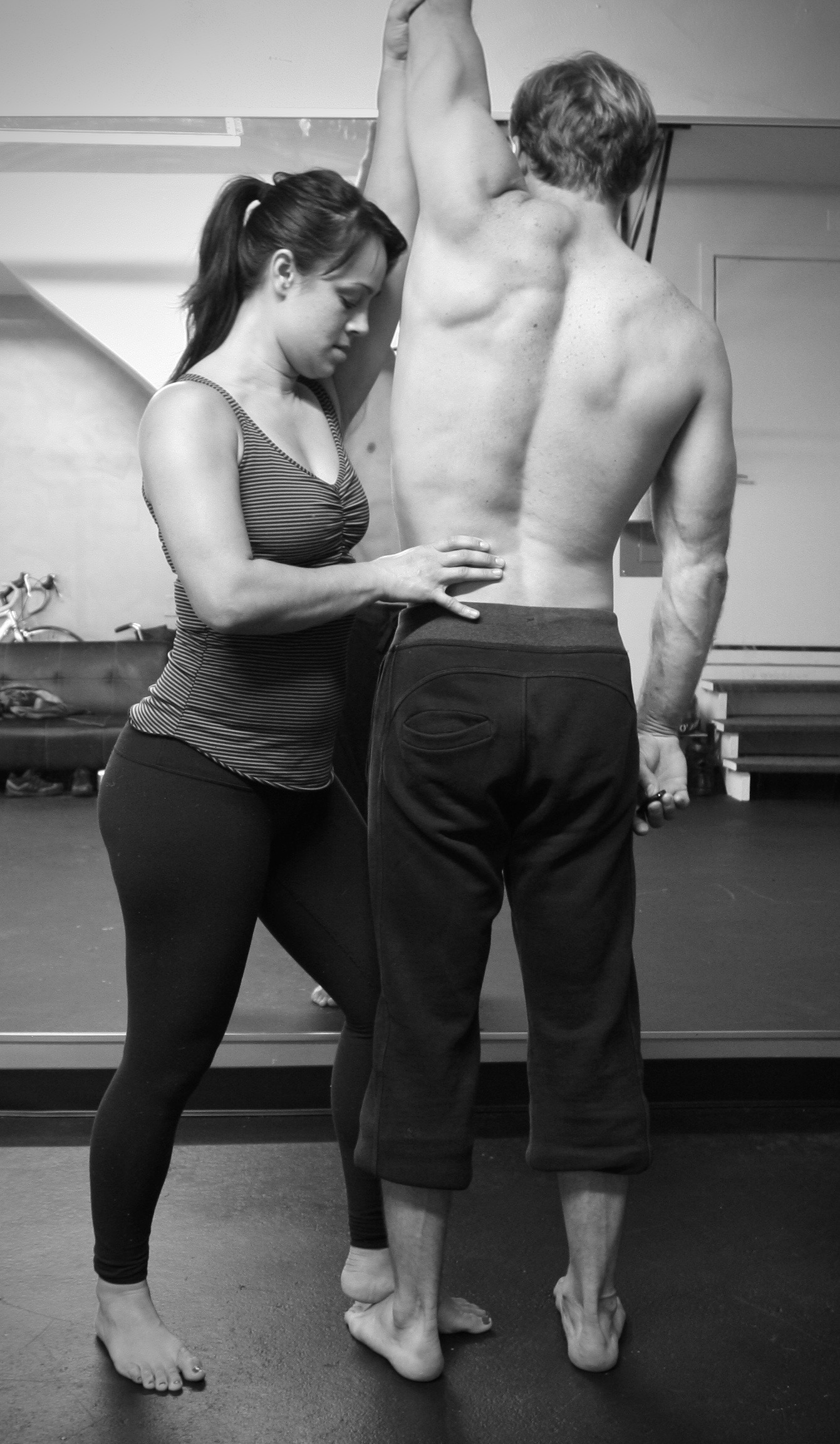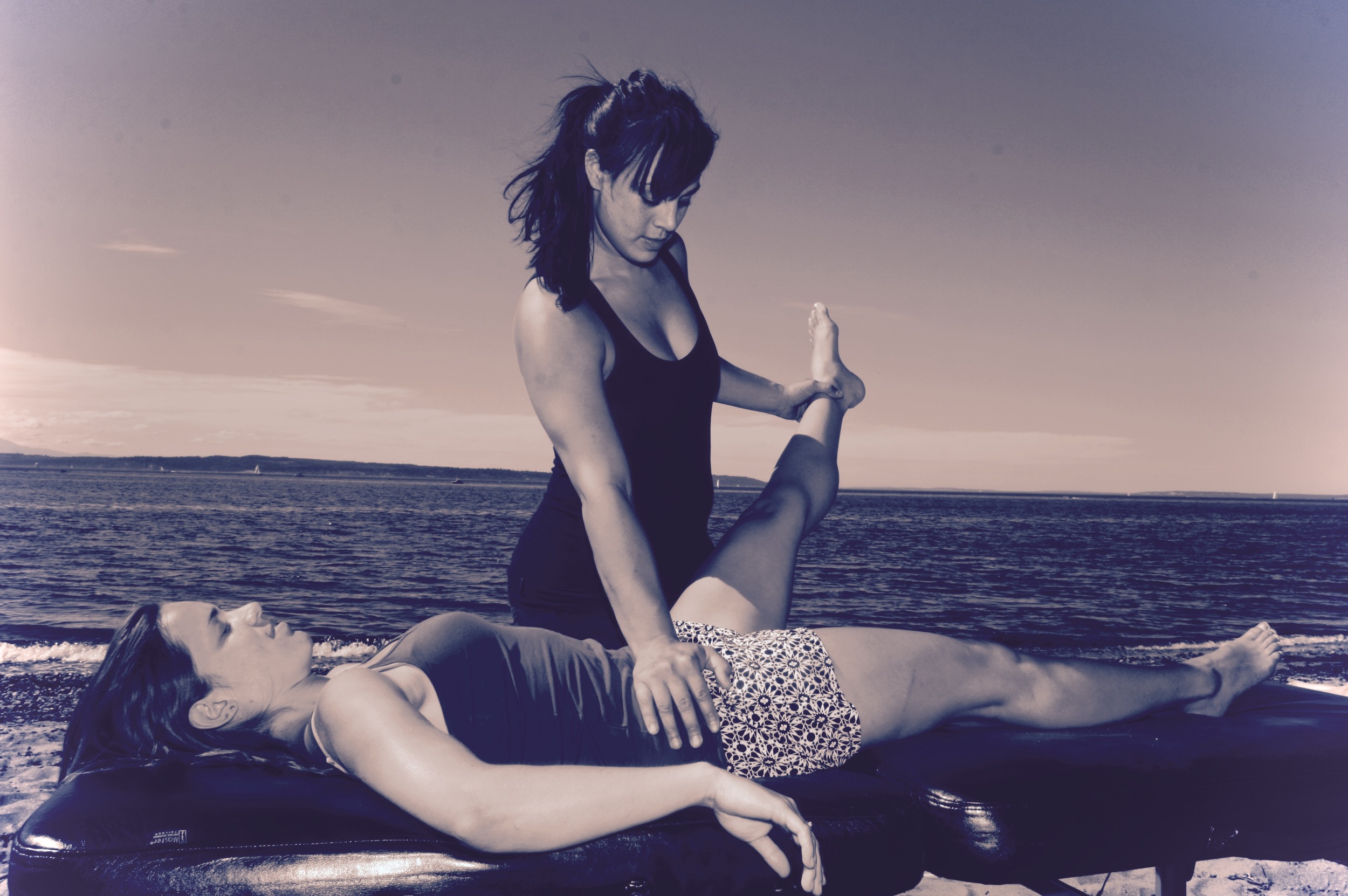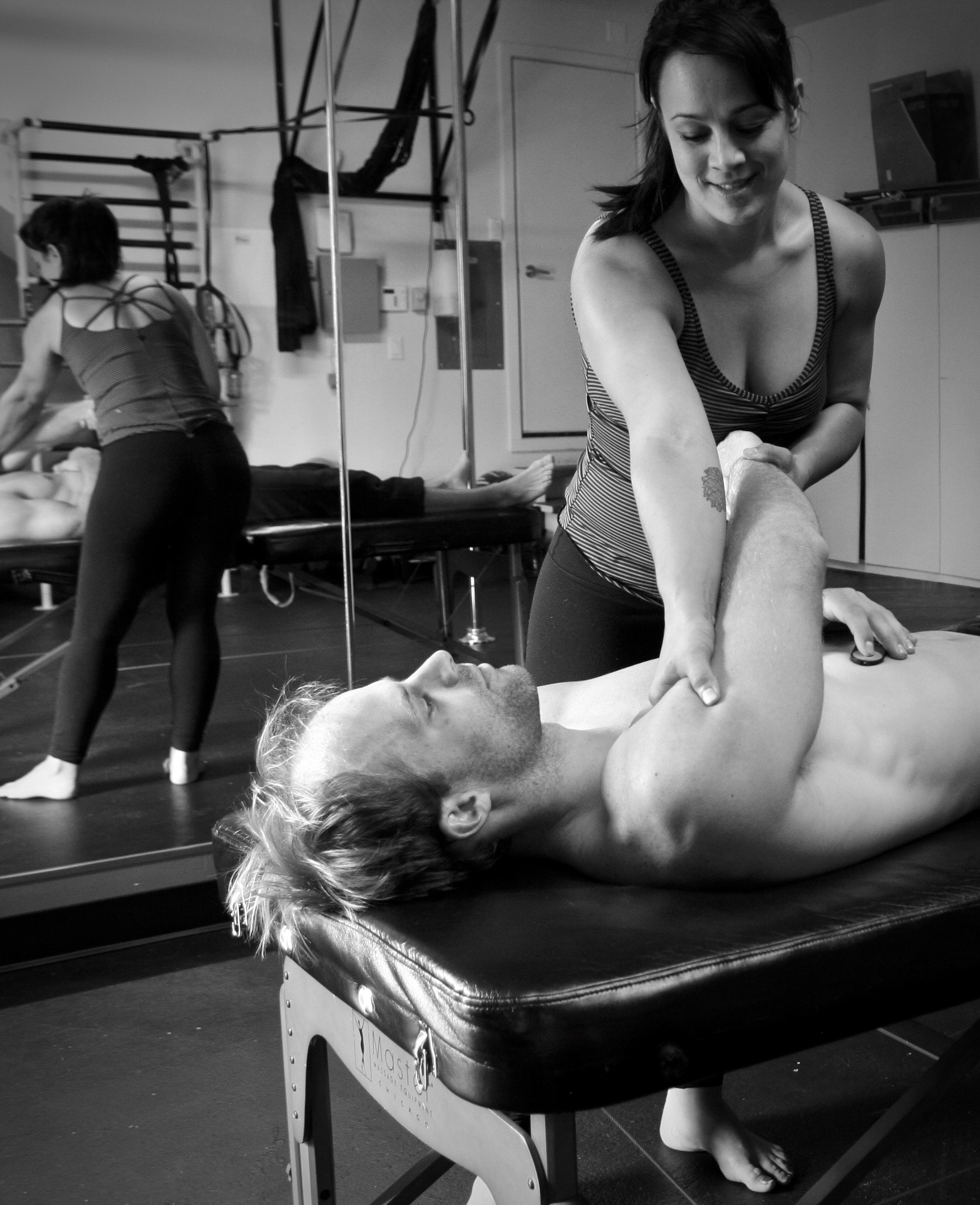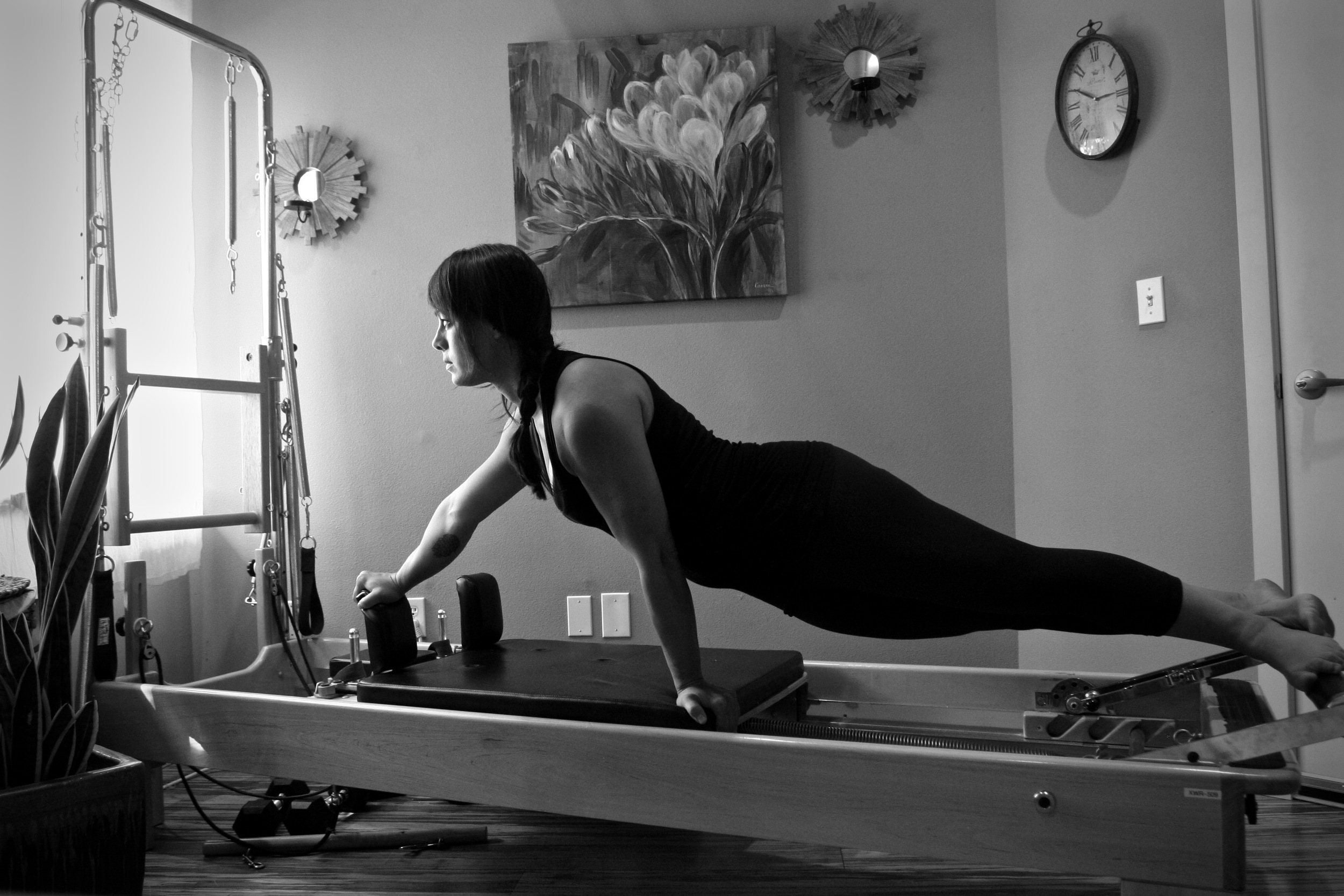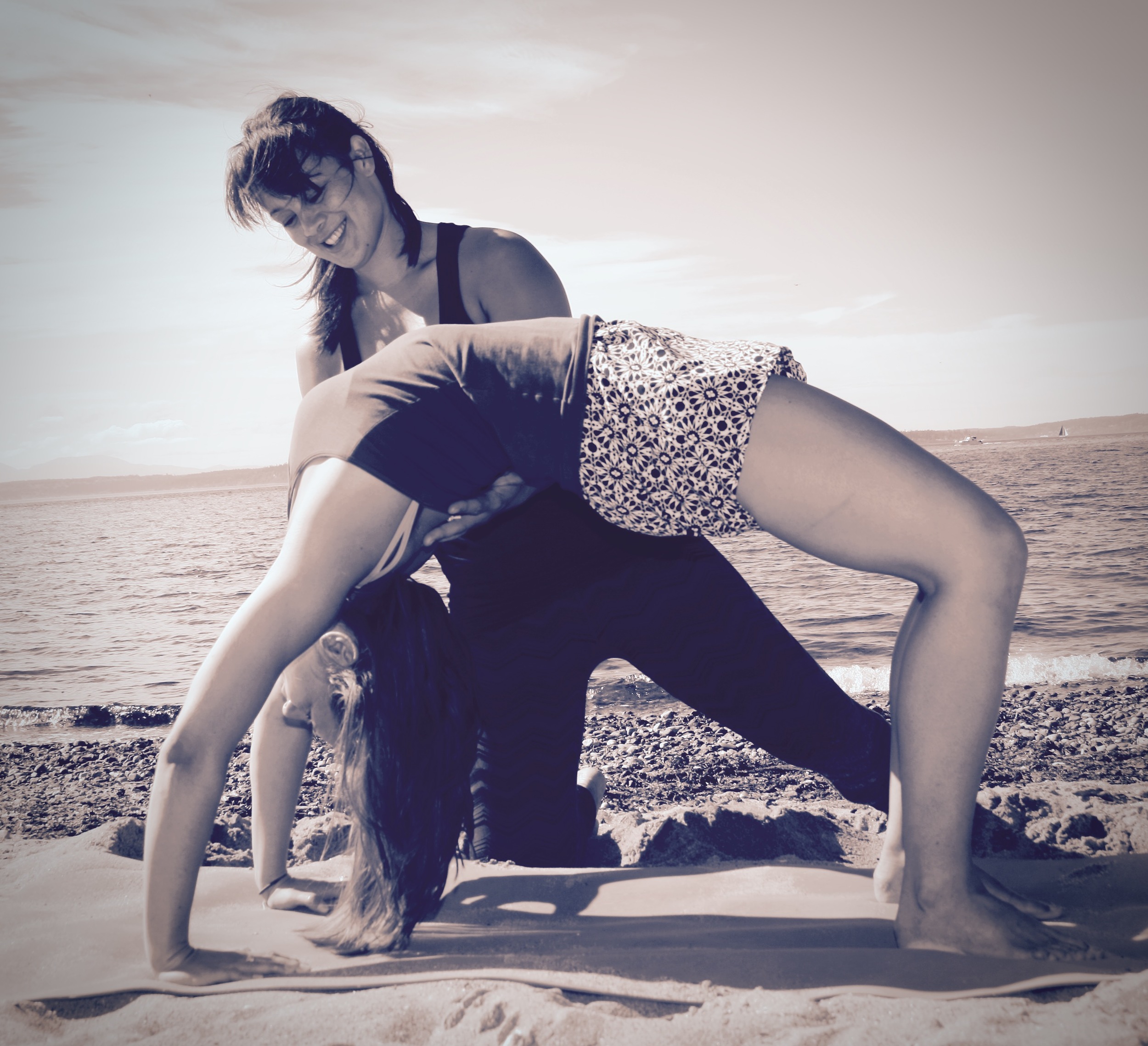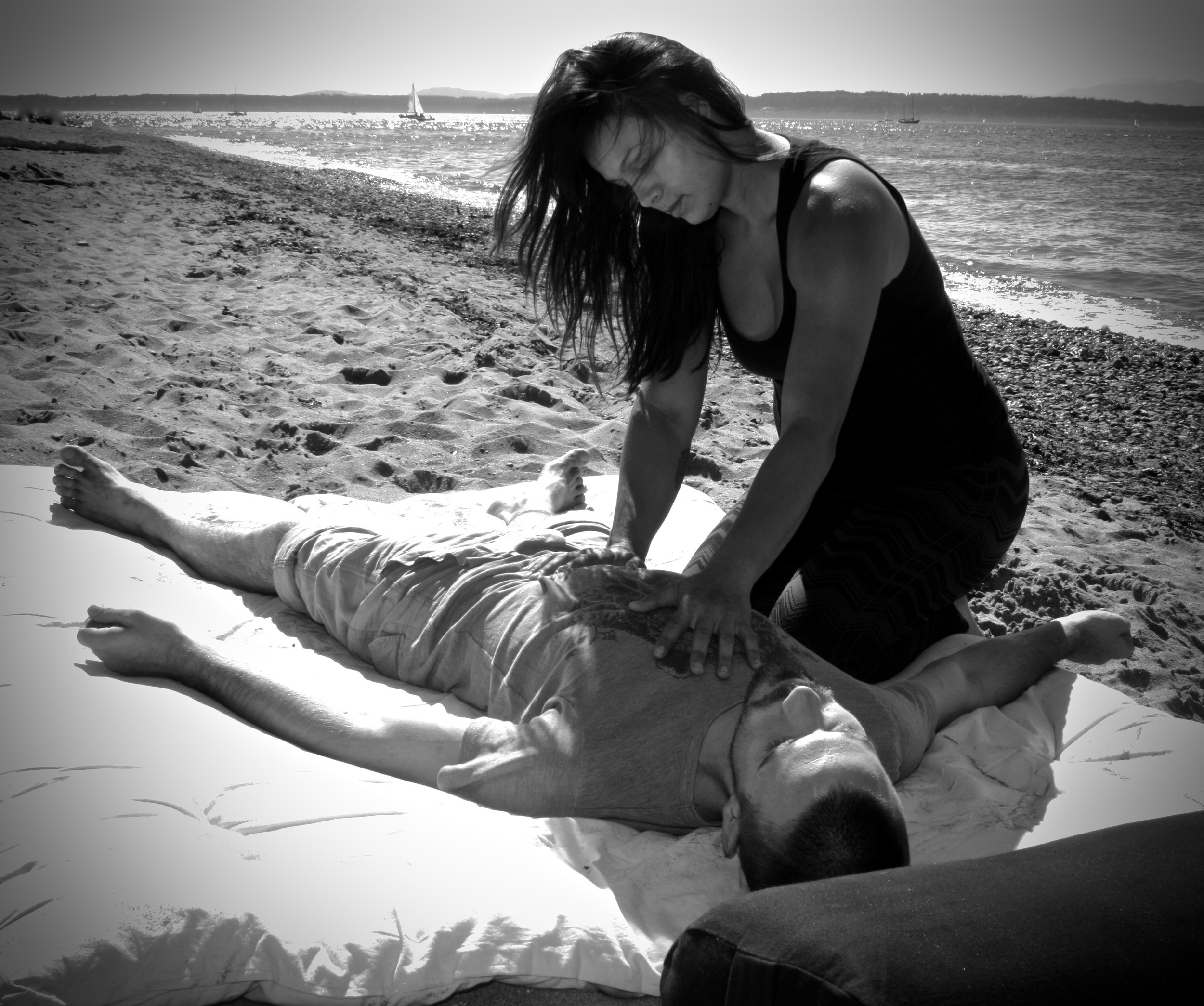Sarah’s bodywork and movement therapy focuses on helping you inhabit and integrate within yourself in a deeply embodied way. She blends an artistic and creative eye with intellect and logic to work on you-and with you-to diminish pain and increase performance. Her work is known to hold a high degree of specificity, to encompass curiosity and openness, to nourish, and to challenge.
She is a biomechanical detective who utilizes deep tissue massage, clinical manual therapy, functional neurology, and fundamental movement to help facilitate lasting change and self-empowerment within you.
Key attributes:
Advanced Proprioceptive Deep Tendon Reflex (PDTR)
NKT Master Level 3
Barral Institute Visceral Manipulation
Functional Range Conditioning Movement Specialist
Highly developed knowledge of clinical and functional anatomy
Well honed soft tissue/massage skills with a degree of specificity found in few practitioners
Pilates and Yoga teaching certificates, with special populations training
Intra-oral Endorsement by the regulating board in WA
Passionate mountain athlete & prior high level soccer player with a plethora of experience training.
Someone who has overcome injury and has the background to both empathize and understand the injury and recovery processes.
"Very seldom does one encounter a practitioner with the heart, knowledge, and dedication that Sarah has. She is engaging, mindful and has incredible intuition that she follows and trusts. As a practitioner of 36 years, I can say whole heartedly the Sarah is a practitioner of the highest order." -Randy
I am a manual and movement therapist who specializes in restoring biomechanical function (NeuroKinetic Therapy-NKT; Proprioceptive Deep Tendon Reflex-PDTR), increasing range of motion and force production throughout an entire spectrum of movement (Functional Range Conditioning-FRC), releasing nerve entrapment (NeuroFascial Release-NFR, Visceral Manipulation), restoring lost movement-the goal is to shine a light on unknown limitations and guide you to restore lost movement patterns through movement and other therapeutic approaches (Anatomy in Motion-AiM), and osteopathic visceral manipulation, all of which I utilize within the framework of massage/bodywork, movement assessments with manual muscle testing, pilates, yoga, and other somatic explorations. My goals are to make each client functionally optimal-reducing pain and increasing performance. I am a LMT, a certified pilates instructor, and a registered yoga teacher.
I am also endorsed in the state of WA to perform intra-oral techniques that are incredibly effective at addressing TMJ disorders, headaches, as well as compensatory patterns within the body.
I am known by my clients to be intrepid, intuitive, caring, genuine, humble, curious, technical, artful, a craftswoman, creative, knowledgeable, and the one I appreciate the most out of every adjective and description of me I've heard: trustworthy. From the onset, I am trusted by clients. I work mindfully to cultivate a safe and trusting space for both myself and for you to be able to feel secure in the treatment/work being done.
I resonate equally with the scientific and energetic realms of bodywork, yet focuses mostly on what seems to connect all aspects, all realms-what is tangible to all people: fascial work and movement.
"Sarah has so many modalities to draw upon to accurately and quickly assess your issues (so often they are NOT what you think is causing your pain), and help you feel better and get stronger right away: Neurokinetic therapy, PDTR, massage, Pilates, and more. Whether you're trying to get up out of bed or up the mountain, she can help!" -Nanci
"I see you as someone who cultivates meaningful specificity rather than many therapists who perform wandering generalities." -Chris
Bodywork & Movement Therapy
"Sarah, when I get a massage by you, I feel like I know what I'm going to get truly worked on-not just strokes that feel nice and not just deep power strokes like some bodyworkers; I feel like you work it from every angle and actively search for the correct pressure and the correct spot that gets the most reaction; I like that you search for the correct reaction. I never feel like I'm going to sleep nor do I do a lot of wincing and that is a sign of your good intuition for pressure and duration on spots. I like how actively aware you are of what I'm experience and your perceptive check ins-because of that, I don't have to feel like I need to protect my body from your manipulations. The physical ease creates mental ease. It also feels like you listen to me well at the beginning and throughout the process of our sessions-every patient appreciates that." -Joe, climber, aerialist
"I'm more aware of my body when I am with you. Your knowledge and the way you explain and teach movement is what allows me to focus on the way I move as well as have a deeper understanding of how I move." -Sam, golfer
"Sarah provided a Thai Massage that was truly exceptional. She possesses a good understanding of the Bio-mechanical issues facing each client and is very good at recommending additional exercises post massage. I've had over 100+ Thai massages on the floor and Sarah, due to her athleticism and strength, ranks as one of the all time best. The environment and her manner was very soothing over the 90 minute session. I look forward to a future session using Pilates and the reformer machine..." -Jim
Neurokinetic therapy (NKT)
“Strength isn’t built, it’s granted by your nervous system”
What is NeuroKinetic Therapy™ (NKT) ?
NeuroKinetic Therapy™ is a powerful healing methodology that can be used both as an assessment tool and as a rehabilitative technique. It gets to the root of chronic and acute muscular tightness and pain, relieving it through working with the motor control center (MCC) of the brain itself in the cerebellum. David Weinstock, one of the principle founders of this manual therapy, describes it as “quick, cost effective treatment for permanent injury rehabilitation.” It can bring almost instant results and is very effective in correcting misalignment and poor posture, preventing injury, and enhancing athletic performance.
In her practice, Sarah has found NKT to be able to assist in many issues, not only in reducing or eliminating pain, but in finding why there are weaknesses in specific muscles or movement patterns (hip hurting while hiking; neck/back hurting while doing sit ups; pain while turning head while driving; grip weakness while climbing; elbow pain when golfing, etc), increasing ROM (range of motion) of joints, increasing balance, improving overall proprioception and body awareness, increasing functionality and movement in complex activities, improving gait, reducing or eliminating headaches, assisting in incontinence dysfunction, finding the cause of sciatica symptoms (and fixing the problem), and more...
NeuroFascial Release
"I'm a complicated client with a disease that causes a lot of skin and fascial scarring and thickening and nerve and muscle dysfunction. Sarah's massages have always left me feeling more mobile, and when she has targeted specific areas of pain or tightness, has made huge improvements where many other providers and therapies have failed. Of particular note, I have swallowing and reflux problems that prevent me from ever lying down and her neuro-fascial work improved this issue overnight that doctors have said nothing can be done for. Also, her straight up feel-good massage is darn good too. Enjoy! You won't be disappointed." -Julian
A neurofascial approach is any method of bodywork aimed at the interface of the nervous system and related tissues.
The neurofascia is a connected system of nerves and fasciae that traverses the whole body. Using a dynamic interplay of mechanics and signaling, the neurofascia coordinates our movement, fluid dynamics, and inflammatory response. The disruption of these functions is a core factor in chronic pain, motion restriction, and nerve entrapment.
“Why would a clinician care about the nerve-fascia relationship?
Most manual therapists have occasionally suspected that nerves deserve more of their attention. But they often lack a safe and intuitive method of engaging with nerve tissue. They have learned nerve anatomy as a segmented system, dissected away from its neighboring fascia. This artificial separation results in a profound difficulty for therapists when trying to palpate nerve tissue, or when trying to figure out how to treat it effectively.
The truth is that we already work on nerve tissue, all the time. The psoas muscle, celebrated for its role in pelvic posture and low back pain, is thickly perforated and then pressed against by the lumbar plexus. The piriformis, too, would feel very different if not for its grip on the sciatic nerve. In fact, if we go looking in most places where our bodywork seems most needed — that plantar fasciitis on the medial heel, that trigger point in levator scapula, those stubborn adhesions in the IT band — we will find sizable nerves in the direct vicinity.
So we can’t avoid touching nerves, and we’re also finding that the health of nerves can be greatly influenced by their mechanical relationship to the body’s fasciae . Blood supply, axoplasmic flow, nerve conduction, and inflammation are all modified when a nerve is stretched or compressed. Conditions like carpal tunnel syndrome, sciatica, tension headaches, trigger points, and radicular pain are common ailments seen in our treatment rooms, and each is caused or helped along by nerve entrapment. Even in patients where no nerve involvement is suspected, we find that our musculoskeletal models are missing something important about the function and feel of nerve tissue.
When we exclude fascia from our conception of the nervous system, we’re left with overly simplistic models for nerve pathology. Likewise, fascial release techniques can be aimless or even harmful if fascia is conceived without its neural axis. Movement disciplines that gloss over the body’s nerve mechanics are robbed of key insights into proprioception, alignment, and chronic restriction.
”
Functional Range conditioning (FRC)
Motor Control
by Dr. Michael Chivers
Functional Range Release & Functional Range Assessment Lead Instructor
@DrMChivers
Simply defined, motor control is the process by which humans (and animals) use their nervous system to activate their muscles and coordinate their joints and limbs to perform a desired movement. Looking superficially at this definition, motor control seems easy to understand and easy to apply in a practical setting when working with our patients and clients. However, the topic of motor control is one that is much deeper to understand and one that is much tougher to apply, which can lead to confusion and inappropriate labelling.
Let me give you some very simple and common examples.
Patient/Client 1 has poor scapular retraction noticeable on a push up, which we prioritize as a need to address and give the appropriate movement drills or exercises to help with the “motor control” of the scapula.
Patient/Client 2 has a poor ability to squat. It is noticeable that he/she cannot squat deep enough for intended demands, or when he/she gets out of the hole the knees come in and the back rounds. This must be a “motor control” problem.
Patient/Client 3 has noticeable balance issues when tested in tandem heel to toe walking on a board or beam. This must be due to poor “motor control”. As such continuing to try and walk on the board can help improve their “motor control”
It may be a matter of semantics to some, but in reality none of those situations should be labelled as motor control due to a perceived impairment in the movement or the movement goal. Let me offer an explanation.
As mentioned, motor control is how our nervous system functions to activate and assimilate the muscles, joints and limbs appropriately to perform a motor skill. In reality, what this boils down to is how our nervous system is able to take in the necessary information provided to it and produce a desired movement. In the realm of dynamic systems, this can be conceptualized as solving the degrees of freedom problem. Traditionally, the DOF problem has been referred to as motor redundancy, although more recent theorists have more appropriately termed it the Principle of Motor Abundance. Essentially this means that the human body has so many options to perform a movement that it almost seems impossible to understand how it picks just one way… while actually it does not. Because of the degrees of freedom problem, each repetition of a movement can be coordinated differently depending on what may be the most efficient way to do so according to the nervous system at that one point in time. Thus, motor control as an entity on its own cannot be directly observed or trained and therefore it is difficult to speak of it as something that is easily applicable to our patients/clients movement repertoire.
When we watch movement in the general sense, what we are observing is motor behaviour, which is how the system acts during the performance of the movement goal. What you are seeing during a movement is that person’s best attempt at the task they are being asked to perform based on a huge number of factors, rightly characterized as constraints that come into play during performance. The constraints shape the performance of the task and are the prime influence on the task goal. Even further, the individual constraints of the patient/client must be considered first and therefore we must ask ourselves if there is mismatch between the conditions of the individual performing the task and the demands of the task itself instead of defaulting to the seemingly simple explanation that there is a motor control issue.
So to come back to the examples again from above, from a constraints perspective, how do we know from direct observation that the patients/clients performing the movements actually have the required degrees of freedom and the acquired motor skills deemed necessary to perform them?
We do not. We cannot.
Motor control is an overarching umbrella that requires us to know how the systems solves the degrees of freedom problem which is impossible to know from simple observation.
Motor control is entirely dependent upon adequate motor learning and eventual motor skill acquisition. It is the learning of skills that leads to an improvement in the overall coordinative structuring. Motor learning appears to be the result of actual synaptic reorganization within the nervous system, and the subsequent stabilized and improved neuronal connections appear to be the foundation of durable motor memory, which allows for efficient, optimal control during movement.
So when we as movement professionals are working with patients/clients in a clinical/rehab or training setting, what we are doing is improving motor learning or movement skill acquisition. We emphasize the acquiring of various motor skills for performance enhancement or the re-acquisition of motor skills that have been degraded due to injury or disease. By improving motor learning or the skill acquisition of a particular task or exercise or movement drill we have given a patient in our designed rehab program, and by improving the nervous system’s perception of that movement, we are ultimately improving motor control. The ability of our nervous system to make cortical representations, the ability of our perceptual systems to perceive the necessary sensory information and the ability of our mask system to move and generate feedback all have to happen appropriately for each and every motor task to be carried out effectively. That is motor control.
Anatomy in motion (AiM)
Integrate | Mobilize | Liberate
Pilates
Sarah became a Certified Pilates Instructor in 2012 after taking a year long 550 hour pilates instructor training that included mat, reformer, tower, cadillac, & barrel apparatuses.
She has been teaching classes and privates at Vitality Pilates in Seattle since 2012.
She has taken a Pilates for MS and other Neurological Disorders workshop with Mariska Breland as well as other movement specific workshops that relate to pilates.
Yoga
Sarah took a 200 hour yoga teacher training in 2013 and is a Registered Yoga Teacher.
Since her training, she has taken a Sri Vidya workshop with Rod Stryker as well as other movement specific workshops that relates to yoga and movement.
Sarah does not currently teach group classes, but does offer yoga specific privates as well and movement education that allows you to understand the asanas deeper. She loves working with people who are new to yoga as well as seasoned practitioners.
Visceral Manipulation
Visceral Manipulation (VM) is a gentle hands-on therapy that works through the body’s visceral system (the heart, liver, intestines and other internal organs) to locate and alleviate these abnormal points of tension throughout the body. "Viscera" relates to the internal organs of the body, such as the liver, kidneys and intestines. Visceral Manipulation is a gentle manual therapy that aids your body's ability to release restrictions and unhealthy compensations that cause pain and dysfunction. Visceral Manipulation, or VM, does not focus solely on the site of pain or dysfunction, but evaluates the entire body to find the source of the problem.
VM employs specifically placed manual forces that work to encourage the normal mobility, tone and motion of the viscera and their connective tissues. Trained practitioners use the rhythmic motions of the visceral system to evaluate how abnormal forces interplay, overlap and affect the normal body forces at work. These gentle manipulations can potentially improve the functioning of individual organs, the systems the organs function within, and the structural integrity of the entire body. The VM therapist feels for altered or decreased motion within the viscera, as well as restrictive patterns throughout the body and then applies VM techniques. VM therapy re-establishes the body's ability to adapt and restore itself to health.
More information: http://www.barralinstitute.com/about/vm.php or http://discovervm.com/what_is_vm.php

